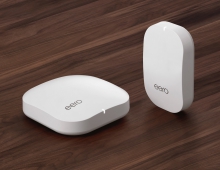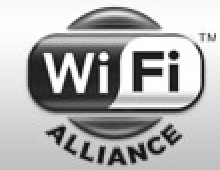
Wireless Industry Leaders Promote Next-Generation Wi-Fi Technology
Leading Wi-Fi chip manufacturers announced a new industry forum on Monday to help accelerate efforts to create a new, faster Wi-Fi standard. The Enhanced Wireless Consortium plans to enable wireless LAN transmission rates of up to 600Mbps.
Twenty seven companies related to the Wi-Fi technologies formed Enhanced Wireless Consortium, in order to help the acceleration of the IEEE 802.11n standard development process and promote a technology specification for next- generation wireless local area networking (WLAN) products.
The EWC specification also defines technologies that address the PC and networking equipment market, as well as emerging handheld and consumer electronic applications. The consortium has designed its specification to support speeds of up to 600 Mbps, and is considering the inclusion of other technologies -- including Space Time Block Coding (STBC) and beamforming -- that will enable systems to deliver greater range for wireless products across multiple market segments and support advanced multimedia applications.
The EWC will make its draft product specification available for public download and will provide implementation rights to all silicon suppliers and system vendors who join the organization. Among the current members are Airoha, Apple, Atheros, Azimuth, Broadcom, Buffalo, Cisco Systems, Conexant, D-Link, Gateway, Intel Corporation, Lenovo, Linksys, LitePoint, Marvell, Metalink, NETGEAR, Ralink, Realtek, SANYO, Sony, Symbol Technologies, Toshiba, USRobotics, WildPackets, Winbond and ZyDAS. If the EWC specification is ratified by the IEEE, EWC members have agreed to make their intellectual property (IP) necessary to the specification available to all parties on reasonable and non-discriminatory (RAND) terms.
The EWC specification comprises a number of technical elements, including interoperability with current 802.11a/b/g networks, PHY transmission rates up to 600Mbps that can be used for transmitting multiple HDTV streams, as well as enhanced efficiency MAC with frame aggregation, which could provide end users with at least 100 Mbps application level bandwidth.
The EWC specifiation uses the frequency plan pf existing 802.11 (2.4GHz and/or 5GHz unlicensed bands) and a more efficient utilization of the wireless spectrum.
The new standard will be based on a technology called multiple-input/multiple-output, or MIMO. MIMO works by allowing two or more distinct signals to be multiplexed and simultaneously transmitted over the same 802.11 radio channel at the same time with no interference. This allows more data to be sent over the available radio spectrum than is possible with standard transmissions today.
For additional information about the Enhanced Wireless Consortium visit http://www.enhancedwirelessconsortium.org.
The EWC specification also defines technologies that address the PC and networking equipment market, as well as emerging handheld and consumer electronic applications. The consortium has designed its specification to support speeds of up to 600 Mbps, and is considering the inclusion of other technologies -- including Space Time Block Coding (STBC) and beamforming -- that will enable systems to deliver greater range for wireless products across multiple market segments and support advanced multimedia applications.
The EWC will make its draft product specification available for public download and will provide implementation rights to all silicon suppliers and system vendors who join the organization. Among the current members are Airoha, Apple, Atheros, Azimuth, Broadcom, Buffalo, Cisco Systems, Conexant, D-Link, Gateway, Intel Corporation, Lenovo, Linksys, LitePoint, Marvell, Metalink, NETGEAR, Ralink, Realtek, SANYO, Sony, Symbol Technologies, Toshiba, USRobotics, WildPackets, Winbond and ZyDAS. If the EWC specification is ratified by the IEEE, EWC members have agreed to make their intellectual property (IP) necessary to the specification available to all parties on reasonable and non-discriminatory (RAND) terms.
The EWC specification comprises a number of technical elements, including interoperability with current 802.11a/b/g networks, PHY transmission rates up to 600Mbps that can be used for transmitting multiple HDTV streams, as well as enhanced efficiency MAC with frame aggregation, which could provide end users with at least 100 Mbps application level bandwidth.
The EWC specifiation uses the frequency plan pf existing 802.11 (2.4GHz and/or 5GHz unlicensed bands) and a more efficient utilization of the wireless spectrum.
The new standard will be based on a technology called multiple-input/multiple-output, or MIMO. MIMO works by allowing two or more distinct signals to be multiplexed and simultaneously transmitted over the same 802.11 radio channel at the same time with no interference. This allows more data to be sent over the available radio spectrum than is possible with standard transmissions today.
For additional information about the Enhanced Wireless Consortium visit http://www.enhancedwirelessconsortium.org.





















